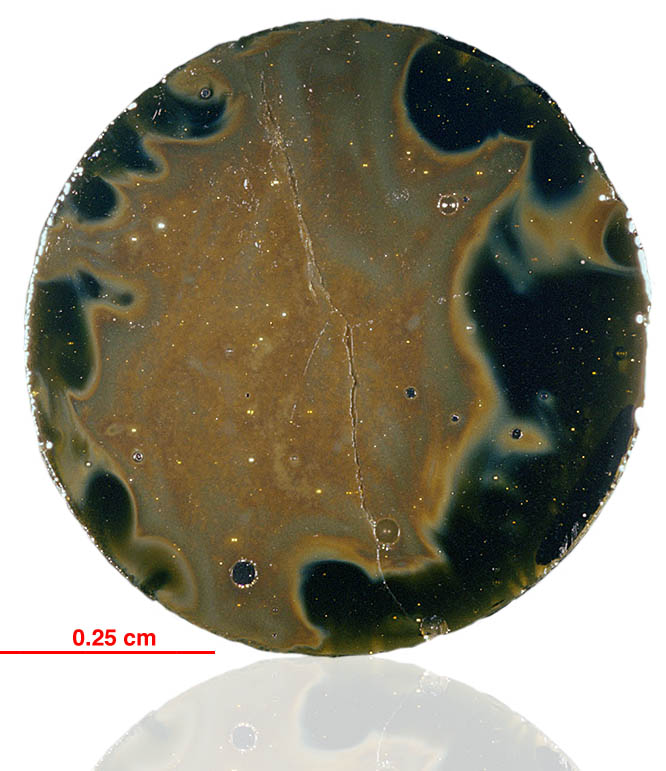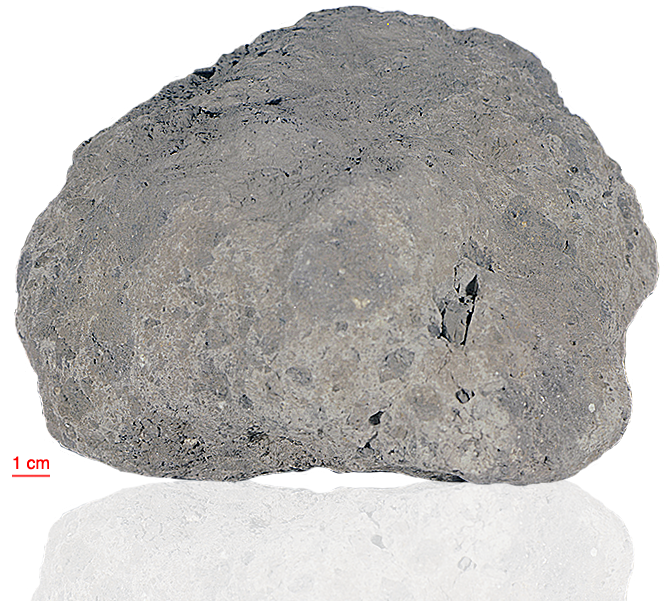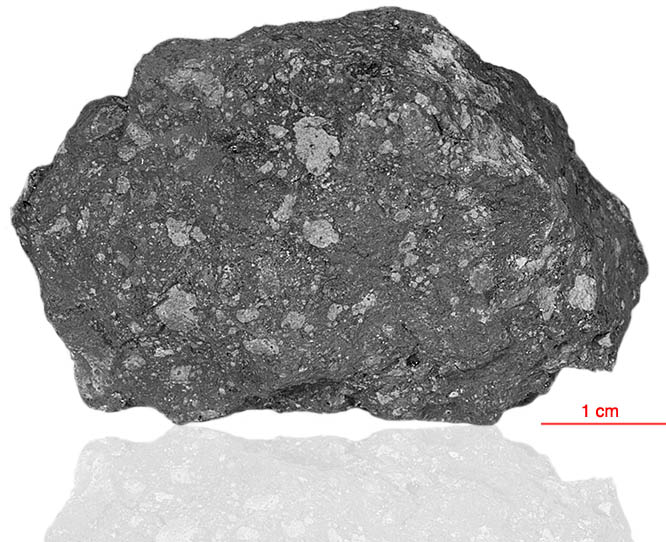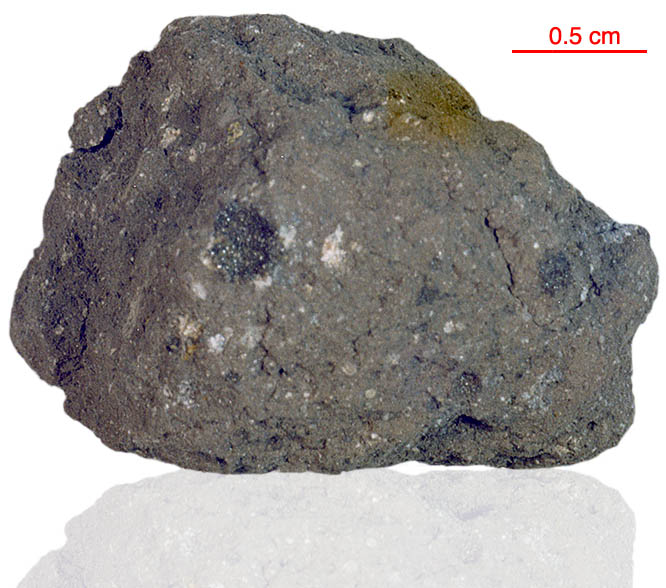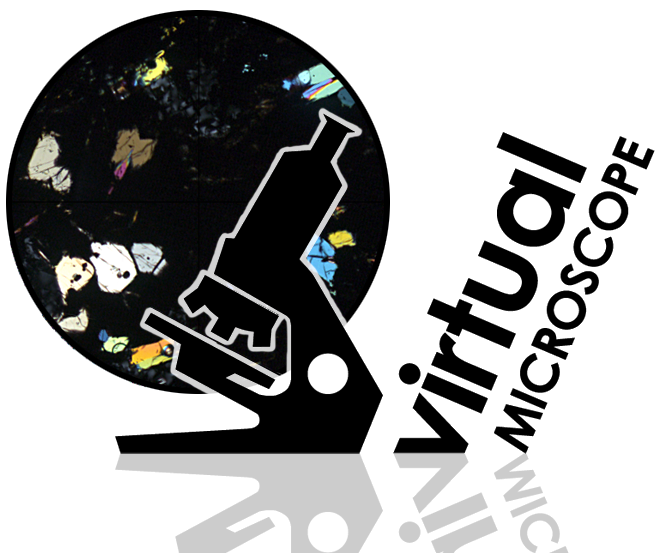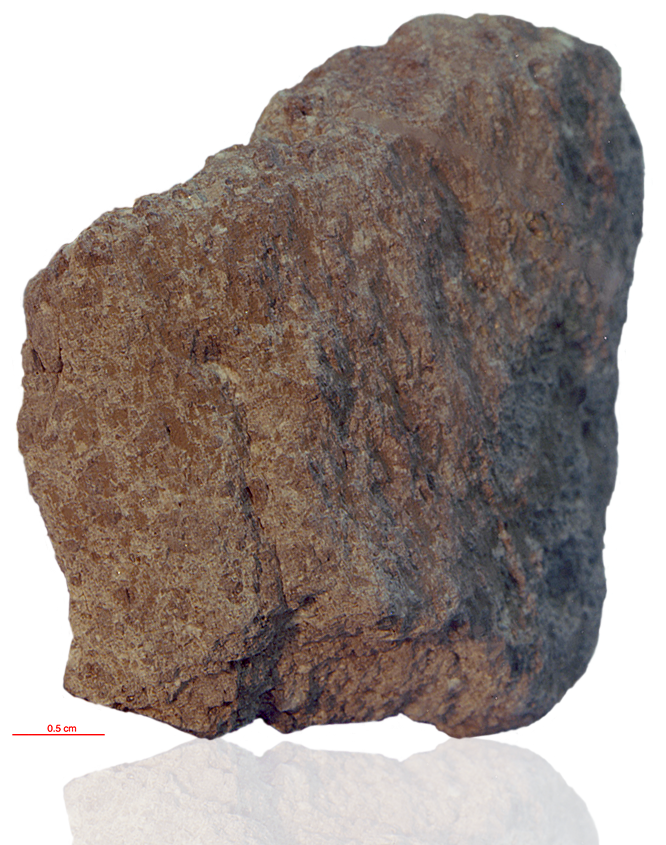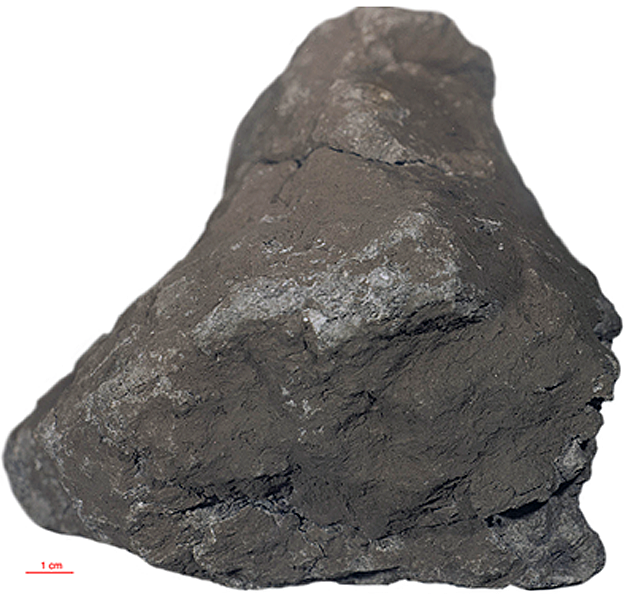
Fact sheet
14304 is a clast-rich impact-melt breccia characterised by a wide range of mineral and lithic clast types in a recrystallized matrix. The matrix consists of irregularly shaped patches of lighter and darker areas, caused by fewer and larger ilmenite crystals (in the coarser-grained lighter area). Our thin section is taken from one of six clasts of VHK (very high potassium) basalt.
14304 weighed 2498.8 grams before analysis and is 4.04±0.11 billion years old (Sm/Nd).
Further details of this and other Apollo samples are here: http://curator.jsc.nasa.gov/lunar/
The Apollo 14 landing site was in a region formed by impact-basin debris.
Most of the 42 kilograms of rocks and soil collected on Apollo 14 are breccias (rocks that are composed of fragments of other, older rocks). In some cases, the rock fragments that form a breccia are themselves breccias. Such rocks obviously have experienced complex histories with multiple generations of impact events. Some breccias were heated enough that some of the material in the rock was melted.
Apollo 14 was launched on 31 January 1971.

